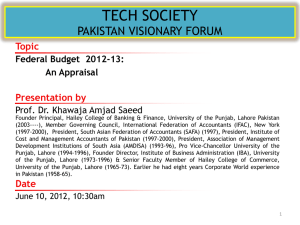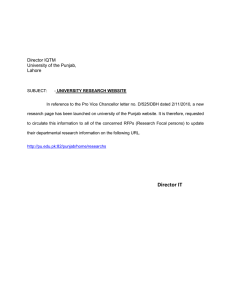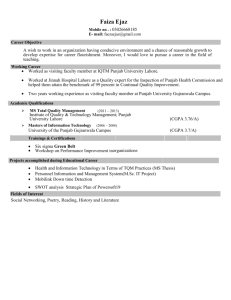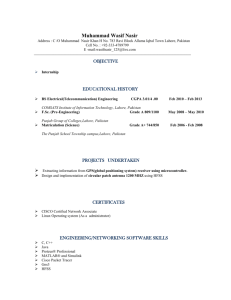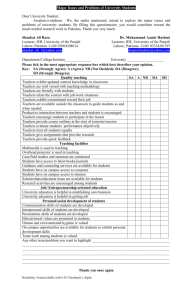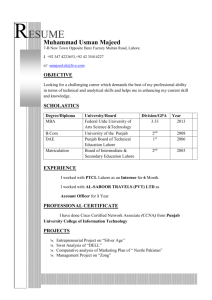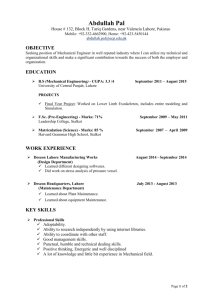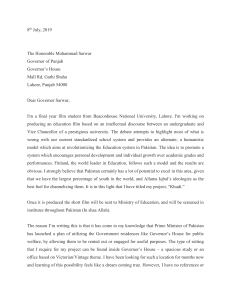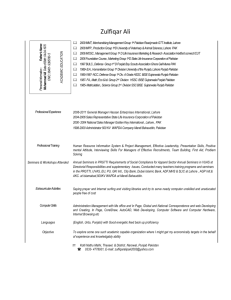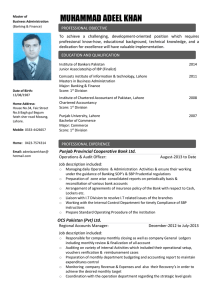Decision-Making-Problem-Solving-2013
advertisement
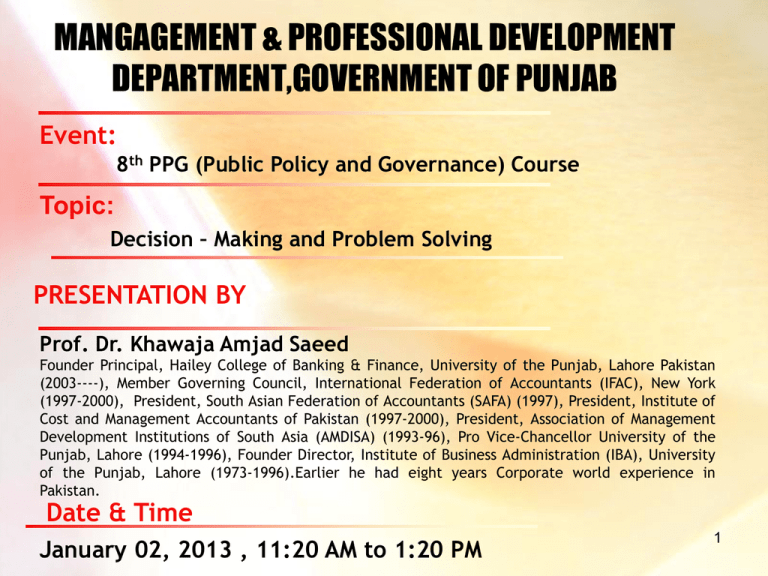
MANGAGEMENT & PROFESSIONAL DEVELOPMENT DEPARTMENT,GOVERNMENT OF PUNJAB Event: 8th PPG (Public Policy and Governance) Course Topic: Decision – Making and Problem Solving PRESENTATION BY Prof. Dr. Khawaja Amjad Saeed Founder Principal, Hailey College of Banking & Finance, University of the Punjab, Lahore Pakistan (2003----), Member Governing Council, International Federation of Accountants (IFAC), New York (1997-2000), President, South Asian Federation of Accountants (SAFA) (1997), President, Institute of Cost and Management Accountants of Pakistan (1997-2000), President, Association of Management Development Institutions of South Asia (AMDISA) (1993-96), Pro Vice-Chancellor University of the Punjab, Lahore (1994-1996), Founder Director, Institute of Business Administration (IBA), University of the Punjab, Lahore (1973-1996).Earlier he had eight years Corporate world experience in Pakistan. Date & Time January 02, 2013 , 11:20 AM to 1:20 PM 1 PRESENTATION FRAME A: General (3) A.1 A.2 A.3 B: Group Learning Management Development Presentation Strategy Specific Presentation (5) Decision Making & Problem Solving B.1 B.2. B.3 Decision Making: Concept Decision Making Steps Leader’s Role 1. Leader’s Power Base 2. Leader’s Types 2 3. Leader’s Profile 4. Significant Dimensions of Leader’s Personality Tips for Leadership 5. B.4 B.5 Personal Qualities Decision Making Models 1. 2. 3. Allah’s Models Administrative Man Model Indigenous 3 A: General A-1: A-2: - Group Learning Speaker Material Participants Management Development Tri – Dimensional: Knowledge Skills Attitudes 4 - KASH SAVE S Skills A Attitudes V Values E Ethics 5 A-3: Presentation Strategy - Lecture – Participatory Self-Evaluation Instrument Graph for Analysis and Discussion Contributions from Participants: Experiential Learning 6 Specific Presentation B-1: - Decision-Making: Concept Means by which to: Administer Plan Organize Lead Control 7 B-2: 1. 2. 3. 4. 5. 6. STEPS Need for a decision Criteria Weightages to each criterion Develop alternatives Evaluate alternative Select the best 8 B-3: (a) (b) Leader’s Role Leaders Power Base i) Legitimate ii) Reward iii) Coercive iv) Referent v) Expert vi) Exchange Leaders Types i) Authoritarian ii) Paternalistic iii) Participative 9 (c) - Leaders Profile Ten Variables: i) Dependence on authority ii) Use of power and fear iii) Dominates iv) Dependence on personal expertness v) Personal Likeableness vi) Exhibition of sincere interest vii) Development of persons viii) Inspiration for the best results ix) Weld members into a team x) Sharing of ends and goals 10 Chart will be distributed for review and discussion. (d) Significant Dimensions of Leader’s Personality: Focus: i) Thinking ii) Feelings and Inter-relationship iii) Outward Behaviour Characteristics A write up is enclosed for self - evaluation. 11 (e) Tips for Leadership i) Make decision quickly. ii) Be independent. iii) Act and stand firmly. iv) Always have a fight on. v) Learn to deliver “Nos”. vi) Consider defeat as lesson. vii) Form Alliance with other leaders. viii) Walk towards danger. ix) Represent your followers x) Create a staff. xi) Reward loyalty. xii) Have a great and worthy purpose. 12 B-4: B-5: (a) (b) - Personal Qualities For Decision-Making 1: Experience 2: Judgment: 4 aspects 3: Creativity - Innovation 4: Quantitative Skills - OR Decision-Making Models Allah “Verily, when He intends a thing, His Command is “BE” and becomes”. [ Al-Quran: Surah Yaseen; 36 – 82 ] Administrative Man Model Herbert Simon, Nobel Prize Winner. 13 - Steps: 1) Reorganize only a limited number of decision criteria. 2) Propose only a limited number of alternative. 3) Be aware of only a few consequences of each alternative. 4) Formulate and simplify method of real situation. 5) Select the alternative which presents a satisfactory solution. 3) Indigenous - Participants experiences. 14 . 15
